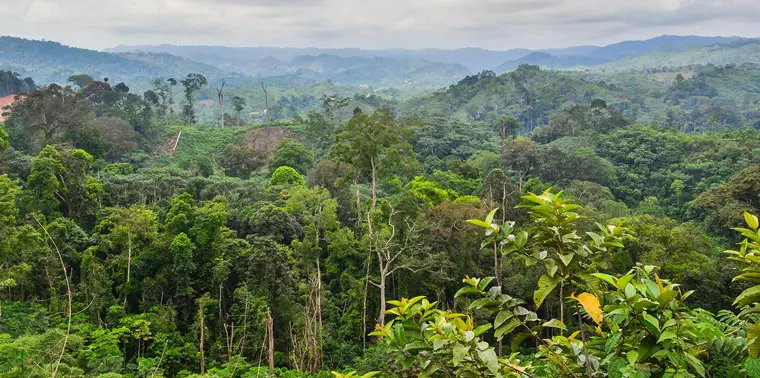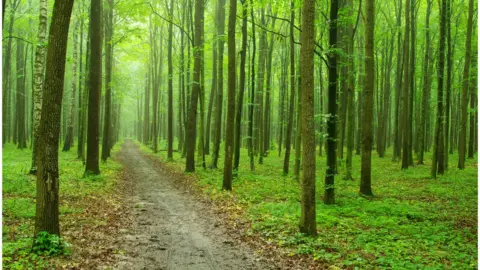Exploring the Top 10 Countries with the Largest Forest Area in the World
Forests play a pivotal role in maintaining the ecological balance of our planet. They are not only crucial for biodiversity but also contribute significantly to climate regulation and sustainable development. In recent times, there has been a growing concern about deforestation and its adverse effects on the environment. Understanding the distribution of forest cover globally is essential for environmentalists, policymakers, and aspirants preparing for various government exams.
Introduction to Forest Cover:
Forests cover approximately 31% of the world’s land area, serving as habitats for millions of species and providing essential ecosystem services. The distribution of forests varies from region to region, with some countries boasting extensive forested areas.
Top 10 Countries with the Largest Forest Area:
- Russia: With its vast expanse, Russia holds the title for the largest forest area in the world.
- Brazil: The Amazon rainforest contributes significantly to Brazil’s extensive forest cover.
- Canada: Forests are a prominent feature of Canada’s landscape, supporting diverse wildlife.
- United States: From the temperate forests of the Pacific Northwest to the expansive woodlands of the Eastern United States, forests play a crucial role in the country’s ecosystem.
- China: Despite rapid industrialization, China has made efforts to conserve and expand its forest cover.
- Australia: The forests of Australia are diverse, ranging from tropical rainforests to eucalyptus woodlands.
- Democratic Republic of the Congo: The Congo Basin is home to one of the world’s largest tropical rainforests.
- Indonesia: Despite facing challenges such as deforestation, Indonesia still boasts significant forested areas.
- Peru: The Amazon rainforest extends into Peru, contributing to its extensive forest cover.
- India: India’s forests support a wide array of flora and fauna, vital for biodiversity conservation.

Why this News is Important:
Understanding Global Forest Distribution:
The knowledge of the top countries with the largest forest area is crucial for aspirants preparing for government exams, especially those related to environmental conservation and sustainable development.
Environmental Awareness and Conservation Efforts:
Awareness about the countries with significant forest cover highlights the importance of conservation efforts and the need for sustainable forest management practices.
Historical Context:
Background on Forest Conservation:
Throughout history, humans have relied on forests for resources and livelihoods. However, industrialization and unsustainable practices have led to widespread deforestation and habitat loss.
Key Takeaways from “Top 10 Countries with Largest Forest Area”:
| Serial Number | Key Takeaway |
|---|---|
| 1. | Russia holds the title for the largest forest area. |
| 2. | The Amazon rainforest significantly contributes to Brazil’s forest cover. |
| 3. | Canada’s landscape is characterized by extensive forested areas. |
| 4. | Forests play a crucial role in the ecosystem of the United States. |
| 5. | Indonesia faces challenges such as deforestation despite significant forest cover. |
Important FAQs for Students from this News
Q1: Why are forests important for the environment?
A: Forests play a crucial role in maintaining biodiversity, regulating climate, providing habitats for wildlife, and offering essential ecosystem services such as air and water purification.
Q2: How do forests contribute to sustainable development?
A: Forests provide valuable resources such as timber, non-timber forest products, and medicinal plants, supporting local economies and livelihoods. They also play a key role in ecotourism and carbon sequestration.
Q3: What are the major threats to global forest cover?
A: Deforestation, illegal logging, forest degradation, urbanization, agricultural expansion, and climate change are among the primary threats to global forest cover.
Q4: How can countries ensure the conservation of their forest resources?
A: Countries can implement sustainable forest management practices, enforce stringent regulations against illegal logging and deforestation, promote afforestation and reforestation initiatives, and engage in international collaborations for forest conservation.
Q5: What are some examples of successful forest conservation initiatives?
A: Examples include protected area management, community-based forest management, certification schemes such as Forest Stewardship Council (FSC), and initiatives like REDD+ (Reducing Emissions from Deforestation and Forest Degradation).
Some Important Current Affairs Links















